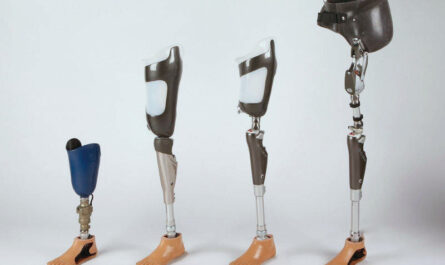
Prosthetic legs, also known as artificial legs, are devices that replace a missing leg or part of a leg. They provide support and mobility to individuals who have had a leg amputated due to injury, congenital defects, or diseases such as diabetes and peripheral artery disease. The increasing prevalence of diabetes and lower-limb amputations across the globe has propelled the demand for prosthetic legs over the past few years. According to the World Health Organization (WHO), every 30 seconds a leg is amputated somewhere due to diabetes. Prosthetic legs allow amputees to regain functional capacity and improve their quality of life by enabling activities such as standing, walking and even sports. These devices come in different varieties based on price, technology, and functionality. From basic mechanical legs to microprocessor-controlled legs that offer greater mobility and security, advanced prosthetics aim to achieve normalcy in gait and balance.
The global Prosthetic Legs Market is estimated to be valued at US$ 6.88 Bn in 2023 and is expected to exhibit a CAGR of 4.3% over the forecast period 2023 to 2030, as highlighted in a new report published by Coherent Market Insights.
Market key trends:
Growing preference for myoelectric prosthetics – Myoelectric prosthetic legs use EMG sensors to detect small electric signals in remaining muscles. By thinking about moving the missing limb, sensors pick up those signals and trigger movement in the prosthetic. This level of control allows for a more life-like gait and functional mobility compared to basic mechanical legs. Advancements in electrodes, microprocessors and battery technology have made these high-end bionic legs affordable and more common. Major players are focusing on designing lighter, more comfortable myoelectric legs to further augment demand.
Porter’s Analysis
Threat of new entrants: Low due to high capital requirement for R&D, manufacturing and distribution network.
Bargaining power of buyers: Moderate due to availability of substitute products and options from various manufacturers.
Bargaining power of suppliers: Low due to availability of various component suppliers.
Threat of new substitutes: Moderate due to availability of other assistive products like crutches, wheelchairs etc.
Competitive rivalry: High due to presence of various global and regional players offering customized solutions.
Key Takeaways
The global prosthetic legs market is expected to witness high growth. The global Prosthetic Legs Market is estimated to be valued at US$ 6.88 Bn in 2023 and is expected to exhibit a CAGR of 4.3% over the forecast period 2023 to 2030.
The global prosthetic legs market is projected to grow at a CAGR of 4.3% during the forecast period. North America holds the major share in the global market owing to increase in incidence of amputations and rising disposable income. Europe is expected to exhibit significant growth over the period
Key players related content comprises Key players operating in the prosthetic legs market are Össur, Ottobock, Fillauer LLC, and Freedom Innovations. Össur provides a range of prosthetic components and systems solutions used daily by people in over 100 countries. Ottobock provides both lower and upper extremity prostheses for the rehabilitation. Fillauer LLC designs and manufactures advanced prosthetic components, bracing and assistive devices for mobility. Freedom Innovations offers microprocessor-controlled prosthetic knees that adapt to the wearer’s unique gait and lifestyle.
*Note:
- Source: Coherent Market Insights, Public sources, Desk research
2. We have leveraged AI tools to mine information and compile it



